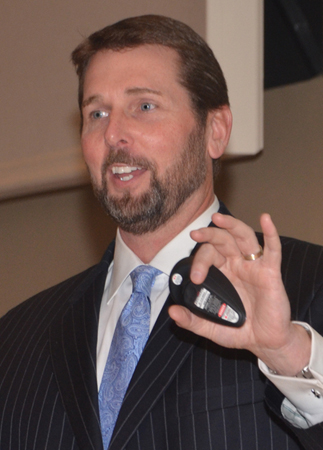Director Scott Bennett of the Arkansas Highway and Transportation Department explained to legislators this past week why his agency was overwhelmed by the recent winter storms that turned Interstate 55 in northeast Arkansas into a parking lot. Bennett said the department lacked the resources to respond to the storm.
The traffic tie-up is already a memory now that the weather is a little warmer. But the lack of resources – that’s going to continue.
While some other state responsibilities – schools, especially – have been well funded in recent years, the same can’t be said for highways. In fact, Bennett told the state’s consulting engineers in a late February speech that while state revenues have been growing at 4.5 percent a year, the Highway Department’s have been flat for decades. In fact, it collected less state revenue this year than last, and less last year than the year before that.
The primary revenue sources for highway construction are federal gasoline and diesel taxes, while state fuel taxes primarily pay for maintenance. These are known as “user fees,” the idea being that the more you drive, the more taxes you pay. If you choose to stay at home or maybe travel via mule, you don’t pay the taxes.
But fuel taxes aren’t what they used to be, so there’s less money for highways. The federal rates of 18.4 cents a gallon for gasoline and 24.4 cents for diesel haven’t risen since 1993. That means Americans are paying a smaller percentage of their income to drive on the same roads – effectively a tax cut. Meanwhile, since cars have become more fuel-efficient, we’re buying fewer gallons of fuel. Again, fewer gallons equals less taxes.
Looking ahead, the problem will worsen as more cars are powered by alternative fuels. Drivers of hybrid vehicles use less gas and therefore pay less taxes than the rest of us. Those who can afford electric cars use the roads almost free of charge.
Because too few dollars are funding too many services, the federal Highway Trust Fund is set to go broke later this year, leaving no federal money for highways, unless Congress acts. One would think Congress wouldn’t let that happen, but just in case there’s a stalemate, the department started cutting projects this past week.
Meanwhile, construction costs have not stood still. (Oil is a primary ingredient of asphalt, after all.) Bennett told the engineers that, 35 years ago, $100 million would widen 143 miles of a rural highway from two lanes to five lanes. Today, it would widen 15.
True, Arkansas voters recently approved two highway initiatives. In 2011, they said yes to the Interstate Rehabilitation Program, a $1.2 billion bond program to repair 450 interstate miles. In 2012, they voted to raise the sales tax by a half cent for the Connecting Arkansas Program, which will finance projects across the state.
Together, those programs will maintain or improve 630 miles of highways. Unfortunately, that’s only 3.8 percent of Arkansas’ 16,400 miles, the 12th largest system in the country.
Where do we go from here? There’s no political will to raise the gas tax. A 2013 state bill would have dedicated new and used car sales tax revenues to highways, but it stalled because of opposition from other groups receiving government money. In recent years, Congress has shifted other government funds to highways. It’s kept the system afloat, but it’s adding to the national debt, and it means we’re financing highways less through user fees and more from the federal government’s big, complicated, leaky pot.
This is all working because the roads haven’t fallen apart yet, but they can’t be neglected forever. As Bennett told the engineers, “We’re in danger of being the first generation to leave our transportation system worse off than we found it if we don’t do something to continue to invest in it.”
Choices have to be made. On the other hand, maybe it’s time to buy a good mule.
Editor’s Note: The slides from Bennett’s Powerpoint presentation can be viewed here.
